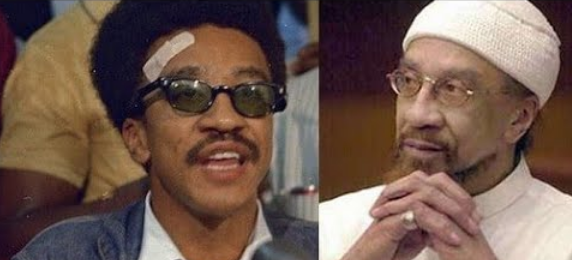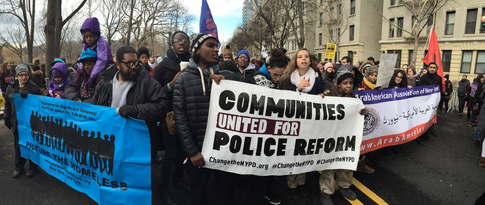[FBI\Hate Crimes]
Arusha Gordon: “As advocates working with communities and law enforcement agencies at the local level, we know that hate crimes are occurring and are deeply disturbed that these crimes do not get reflected in the data.”
Photo: YouTube
Photo: YouTube
According to the FBI’s newly released 2019 Uniform Crime Reporting hate crimes data (UCR), not only are hate crimes in the United States increasing, but hundreds of law enforcement agencies nationwide failed to participate in the annual reporting, signaling vast underrepresentation of the total number of cases.
“As advocates working with communities and law enforcement agencies at the local level, we know that hate crimes are occurring and are deeply disturbed that these crimes do not get reflected in the data,” said Arusha Gordon, associate director of the James Byrd Jr. Center to Stop Hate at the Lawyers’ Committee for Civil Rights Under Law. “When communities and individuals are targeted in a hate crime, and law enforcement fails to capture the bias-motivated nature of the crime in their reporting, that sends a message to the community that law enforcement fails to understand what hate looks like.”
The UCR hate crimes data show a slight increase in the number of hate crimes reported by law enforcement, from 7,120 in 2018 to 7,314 in 2019. However, it is likely the number of hate crimes is vastly underrepresented in this data, as 451 fewer law enforcement agencies participated in the FBI’s Hate Crime Statistics Program than in 2018. The vast majority of law enforcement agencies (86.1%) participating in the Hate Crime Statistics Program reported that no hate crime occurred in their jurisdiction– statistically, a near impossibility.
The James Byrd Jr. Center to Stop Hate and the Matthew Shepard Foundation applaud those law enforcement agencies that engaged in the hate crime reporting process. Robust and reliable data is key to ensuring that our law enforcement agencies and community leaders know where and how to direct resources to combat hate.
As in previous years, a victim’s perceived race/ethnicity/ancestry remains the largest motivating factor in the hate crimes data (in 2018, 57.5 % of hate crimes were motivated by race/ethnicity/ancestry, in 2019 it remained roughly the same at 57.6% percent), with nearly half of those crimes motivated by anti-Black or African-American bias. Hate crimes motivated by anti-white bias dropped from 20.1 percent in 2018 to 15.7 percent in 2019.
“We recognize that some vulnerable individuals who have been historically disenfranchised and targeted for violence and discrimination by law enforcement and others in power are reluctant to report their victimization to their local police,” said Cynthia Deitle, Director of Civil Rights Reform at the Matthew Shepard Foundation. “For these individuals, the police were never seen as their guardians, nor were the police trusted to investigate crimes committed against them.”
The percentage of reported hate crimes committed against people because of their sexual orientation or gender identity saw a slight increase, from 18.9% in 2018 to 19.4% in 2019. Perhaps reflecting COVID-19-related hate, the percentage of hate crimes targeting individuals of Asian descent increased from 3.4% in 2018 to 4.4% in 2019. The FBI data also shows a significant increase in the number of individuals who lost their lives as a result of a hate crime – jumping to 51 in 2019 from 24 in 2018.
These numbers could indicate that bias crimes are becoming more violent.







